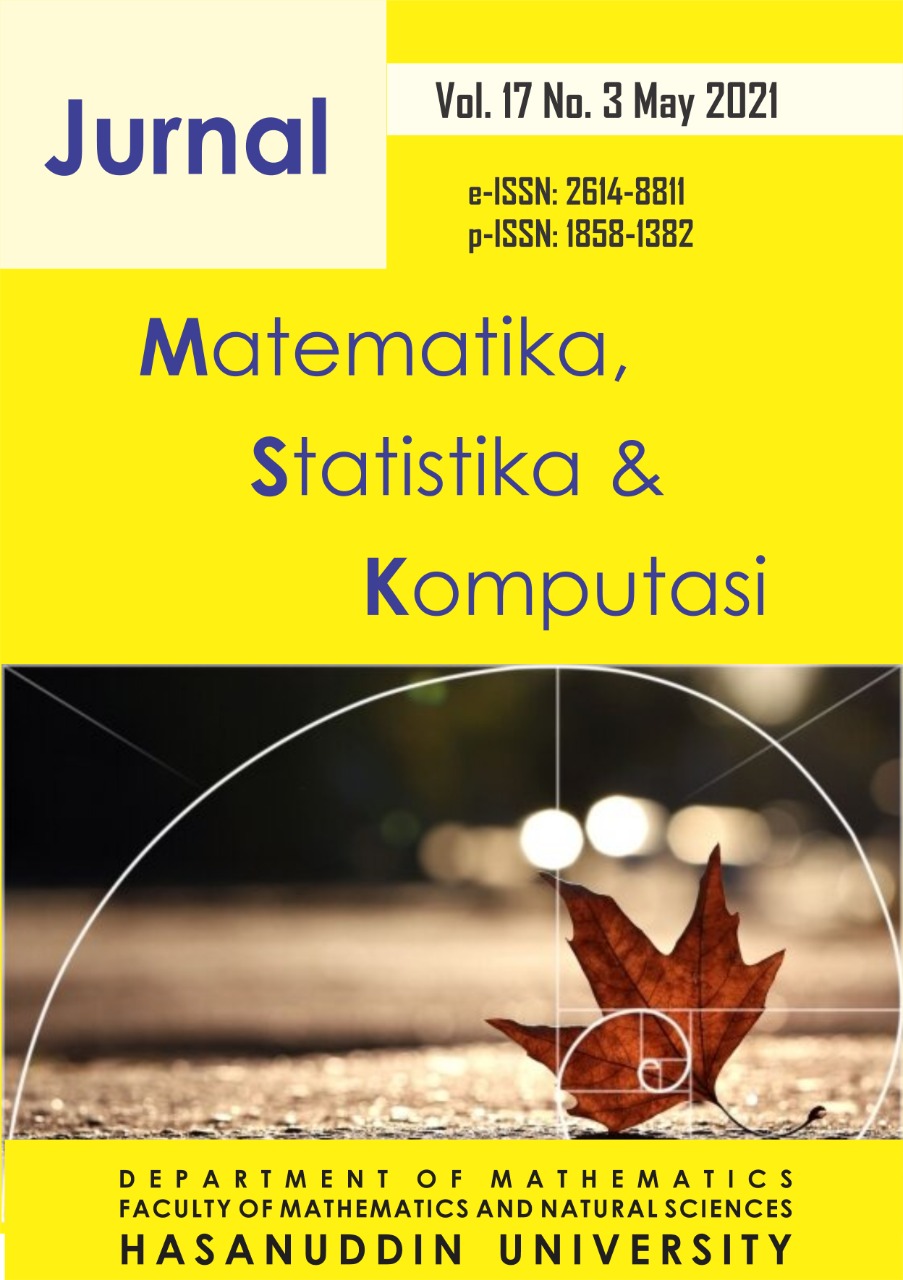Risk Analysis of Gold Sale Price and Investment of Antam Shares Using Expected Shortfall in Pandemic Covid-19
DOI:
https://doi.org/10.20956/j.v17i3.12779Keywords:
ARCH, Expected Shortfall, GARCH, VaRAbstract
The Covid-19 pandemic caused the price of gold produced by PT Aneka Tambang (Antam) to experience a high increase following the world gold price, while stock investment decreased. Measuring risk is significant in financial analysis; this is related to investment funds, which are quite large and narrow about public funds. This study analyzes the risk data on Antam gold price and Antam stock closing price with an estimated Shortfall (ES). The method used to measure the risk of investing in stocks is ES. ES is the expectation of a conditional loss that exceeds Value at Risk (VaR). To compute ES data showing deviations from normality and Cornish-Fisher expansion. The volatility measurement model used is the autoregressive conditional heteroskedasticity (ARCH) and generalized ARCH (GARCH) model.This study found that the ES value of Antam gold price was smaller than Antam stock price.Downloads
References
Artzner P., Delbaen F., Heath D.D. & Jean-Marc E. 1999. Coherent Measures of Risk. Mathematical Finance, Vol. 9, No. 3, 203-228.
Berggren E. 2017. Are GARCH models necessary for Expected Shortfall. Bachelor thesis at the Department of Statistics, Lund University, Sweden.
Burdorf T. & Vuuren G.V. 2018. An evaluation and comparison of Value at Risk and Expected Shortfall. Investment Management and Financial Innovations, Vol. 15, No. 4, 17-34.
Hermansah, 2017. Estimation of Value at Risk and Expected Shortfall for Financial Time Series Using a Hybrid GARCH Generalized Pareto Distribution Model. Proceedings of 1st Ahmad Dahlan International Conference on Mathematics and Mathematics Education Universitas Ahmad Dahlan, 13-14 October 2017, 130-134. Universitas Ahmad Dahlan, Yogyakarta.
Kaya P., Güloğlu B. 2017. Modeling and Forecasting the Markets Volatility and VaR Dynamics of Commodity. Journal of BRSA Banking and Financial Markets, Vol. 11, No. 1, 9-49.
Rahman K.A. 2016. Interbank Contagious: Mengukur Pengaruh Resiko Sistemik antar Bank di Indonesia Studi Komparatif Sebelum dan Sesudah Krisis Global Tahun 2008. Jurnal Ilmiah Mahasiswa FEB, Vol. 4, No. 2, 1-9.
Rahmawati R., Rusgiyono A., Hoyyi A. & Maruddani D.A.I. 2019. Expected Shortfall dengan Simulasi Monte-Carlo Untuk Mengukur Risiko Kerugian Petani Jagung. Media Statistika, Vol. 12, No. 1, 117-128.
Ramponi F.A., Campi M.C. 2018. Expected shortfall: Heuristics and certifificates. European Journal of Operational Research, Vol. 267, No. 3, 1003-1013.
Rohmah S.M. & Suharsono A. 2017. Estimasi Value at Risk dalam Investasi Saham Subsektor Perbankan di Bursa Efek Indonesia dengan Pendekatan Extreme Value Theory. Jurnal Sains & Seni ITS, Vol. 6, No. 2, 205-211.
Saepudin Y., Yasin H. & Santoso R. 2017. Analisis Risiko Investasi Saham Tunggal Syariah dengan Value at Risk (VaR) dan Expected Shortfall (ES). Jurnal Gaussian, Vol. 6, No. 2, 271-280.
Situngkir H. 2006. Value at Risk yang Memperhatikan Sifat Statistika Distribusi Return. Bandung Fe Institute, Bandung.
Sukono, Soeryana E., Simanjuntak A., Santoso A, Ghazali P.L. & Bon A.T. 2019. ARIMA-GARCH Model for Estimation of Value-at-Risk and Expected shortfall of Some Stocks in Indonesian Capital Market. Proceedings of the International Conference on Industrial Engineering and Operations Management Riyadh, Saudi Arabia, November 26-28 2019, 327-334. Saudi Arabia.
Tsay R..S. 2010. Analysis of Financial Time Series, Third Edition. John Wiley & Sons. Inc., New York.
Yamai Y. & Yoshiba T. 2002. On the Validity of Value-at-Risk: Comparative Analysis with Expected Shortfall. Monetary and Economic Studies. Vol 20, No. 1, 57-85.
Downloads
Published
How to Cite
Issue
Section
License
Copyright (c) 2021 Author and publisher

This work is licensed under a Creative Commons Attribution 4.0 International License.

This work is licensed under a Creative Commons Attribution 4.0 International License.
Jurnal Matematika, Statistika dan Komputasi is an Open Access journal, all articles are distributed under the terms of the Creative Commons Attribution License, allowing third parties to copy and redistribute the material in any medium or format, transform, and build upon the material, provided the original work is properly cited and states its license. This license allows authors and readers to use all articles, data sets, graphics and appendices in data mining applications, search engines, web sites, blogs and other platforms by providing appropriate reference.








